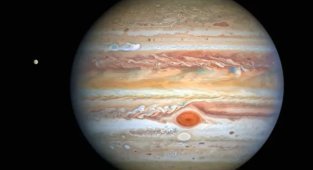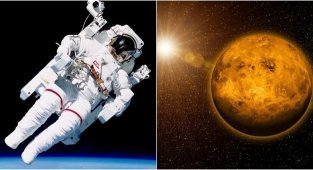25 interesting oddities discovered by scientists in space (26 photos + 1 video)
Space still holds so many unknowns! Have you ever heard of the space jellyfish? What about lunar moons? If not, let's fix it. 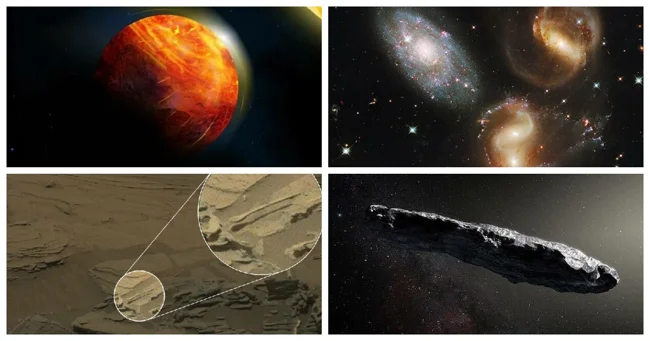
25. Hell Planet 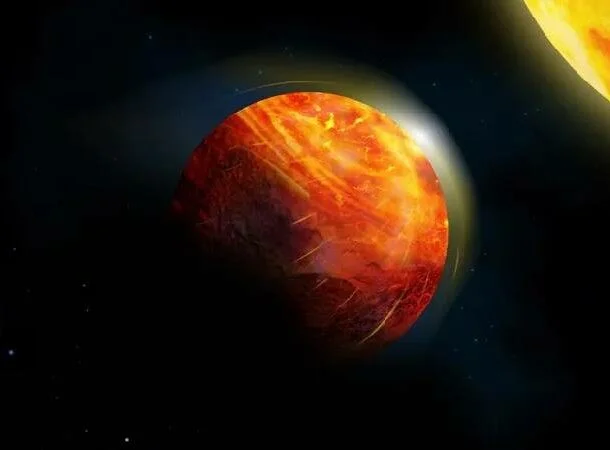
Astronomers recently discovered an uninhabitable “hell planet” hurtling through space. No, this is not Earth. This is the so-called lava planet K2-141b, about 200 light years away. It has a giant sea of lava 100 kilometers deep and winds that destroy everything in its path at four times the speed of sound.
Because the planet orbits its sun, one side is constantly lit and temperatures reach 5,432 degrees Fahrenheit, while the other is in perpetual darkness and temperatures reach -328 degrees.
24. The Planet That Never Was 
In 2008, scientists announced the discovery of the first exoplanet visible to the naked eye. Fomalhaut b (also known as Dagon) was seen in images taken by the Hubble Space Telescope. However, by 2012 the planet simply disappeared.
By 2020, a study published in the journal PNAS (Proceedings of the National Academy of Sciences) showed that what astronomers thought was a planet was just a giant dust cloud formed by the collision of two massive cosmic bodies composed of dust and ice .
23. Whirlpool Galaxy 
The Whirlpool Galaxy, or Messier 51, is one of the most famous and photographed celestial objects. It can be found in the constellation Canes Venatici, 23 million light years from Earth. This is the first galaxy to have a spiral structure discovered. She looks absolutely fantastic. In addition, it has a companion galaxy, NGC 5195, and the gravitational interaction between them causes intense star formation.
22. Floating spoon on Mars 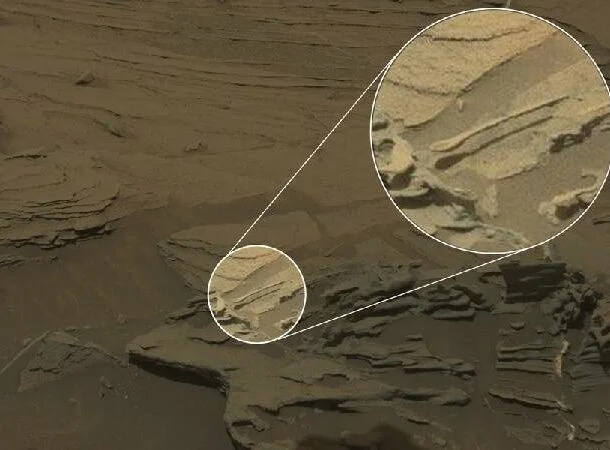
In 2015, NASA's Curiosity rover discovered a "floating teaspoon" on Mars. Scientists explained that this is nothing more than a natural sculpture created by the wind in rocks. And all other speculations are ordinary pareidolia.
21. Hexagon of Saturn 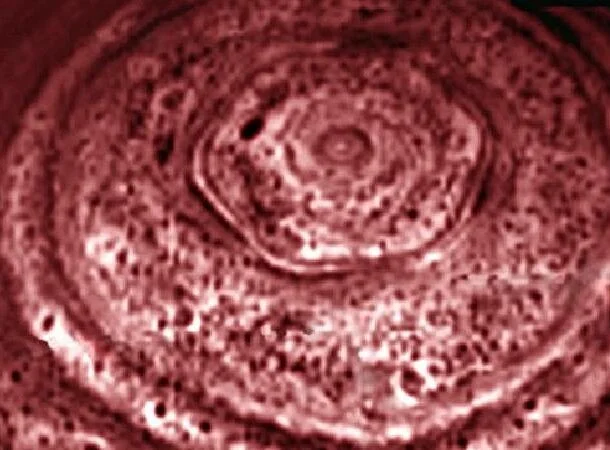
The Saturn Hexagon is perhaps the most incredible and mysterious vortex in the Universe. This massive storm, large enough to span four Earths and taking over ten hours to spin, has existed (and continues to exist) for hundreds of years.
The storm is located in Saturn's atmosphere, where the speed of atmospheric winds fluctuates greatly. Saturn's hexagon arose from a region of turbulent air sandwiched between two vortexing wind masses rotating around the planet at different speeds. The vortex at Saturn's north pole (inside the hexagon) rotates faster than the winds outside the hexagon, which led to the formation of this amazing storm.
20. Lunar Moon 
Some moons, according to scientists, have their own satellites (moons). Small moons orbit large moons, which in turn orbit planets. Scientists are already coming up with names for small moons because they are afraid of being caught off guard when they eventually discover one. “Subluna” and “Lunar Moon” are the main contenders.
19. Messenger from afar - Oumuamua 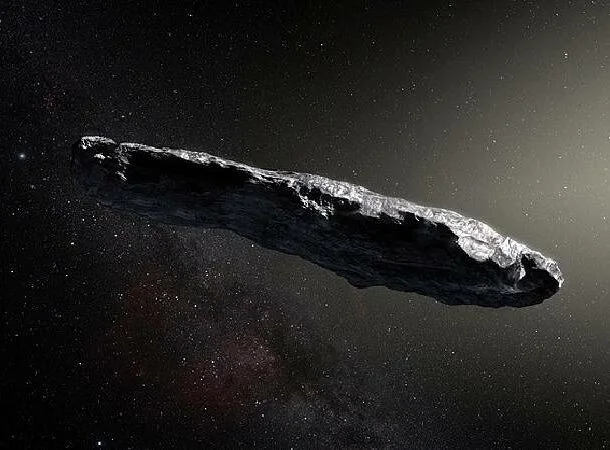
On October 19, 2017, the University of Hawaii's Pan-STARRS1 telescope discovered an object that was completely beyond explanation. At first they thought it was a comet. But since it did not exhibit any comet-like properties, it was reclassified as an asteroid. However, this did not make any sense. The space object was cylindrical and long and moved in a way that no asteroid would move. In addition, as it rotated, it became brighter—this had never been observed before.
So what was it? Well, it was a space rock from outside our solar system. It originated outside of our solar system before it even began. That is, we will most likely never know where it came from. He was given a fitting name: 'Oumuamua, a Hawaiian term meaning "a messenger from afar who arrived first."
18. Space Jellyfish USS Jellyfish 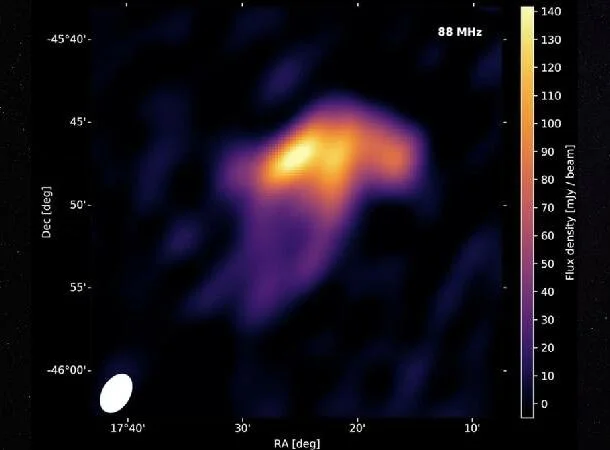
Extraterrestrial jellyfish may seem like a plot line from a scary sci-fi movie. However, scientists recently discovered a massive tentacle-like body spreading through space, leaving them perplexed.
The USS Jellyfish is a strange collection of charged particles that extends over a million light years. The incomprehensible giant was named the first known polyphenix - an incomprehensible and complex space that emits radio waves. Astronomers say they have never seen anything like it before.
17. Oort cloud 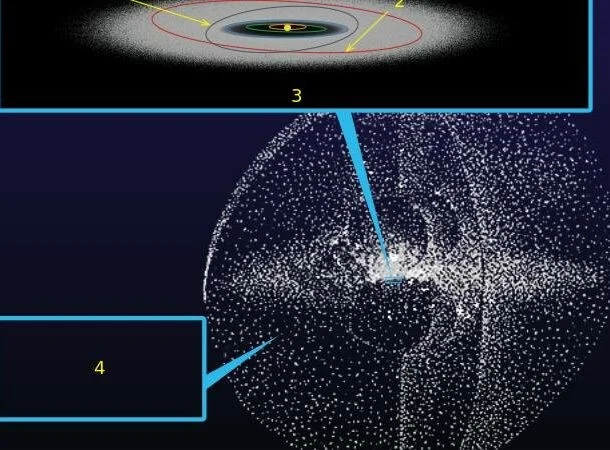
Comets are space nomads of our solar system, arriving from beyond the planetary boundaries of Neptune and Pluto into the so-called Oort cloud. They then travel back in giant elliptical orbits, approaching the Sun. The Oort cloud contains hundreds of billions of icy bodies that could become comets if only they could find their way to the Sun.
In August 2013, one of the comets finally reached it and made a fatal kamikaze fall directly into the Sun. Usually such events go unnoticed by astronomers. However, this event was recorded by the Solar and Heliospheric Observatory spacecraft, which monitors the Sun, its corona and the solar wind. SOHO captured the final moments of the comet's encounter with the Sun, never to be seen again.
16. Stefan's Quintet of Galaxies 
The five galaxies that make up Stefan's Quintet are the first compact group discovered by scientists. However, at the time of discovery, everyone thought they were just clouds of gas in the Milky Way. As telescopes improved, astronomers eventually figured out what they were looking at, but it was a mystery. A sensational mystery.
It is related to redshift, a change in the wavelength of light that tells us how far away a galaxy is from us. The galaxies in Stefan's quintet look like they are physically connected. Moreover, soft cosmic tendrils seem to hold them together. Almost as if they were interconnected. Therefore, their redshifts should be the same.
However, according to the data, 4 of them are located at a distance of 300 million light years, and the remaining one is only 30 million light years away. This difference is not just technical, it is huge. If two galaxies at the same distance have very different redshifts, then the redshift can no longer be used to predict the distance.
15. Jack Lantern's face in the sun 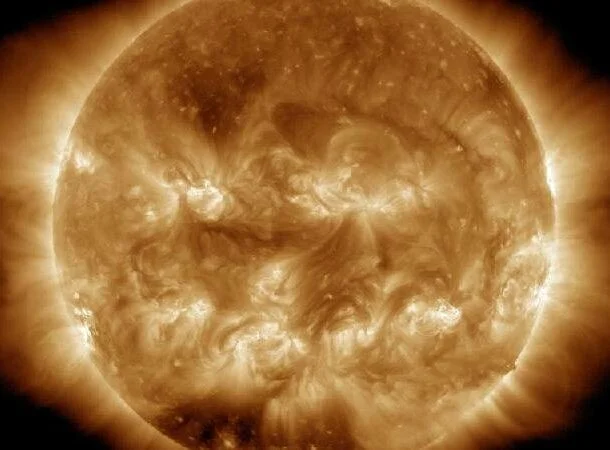
A couple of years ago, on October 31, NASA's Solar Dynamics Observatory posted a grinning image of a "solar lantern" on social media. While they probably enjoyed the opportunity to show off the friendly face of our Sun, it was actually an educational post as well.
NASA said that active regions are actually markers of an extreme and complex collection of magnetic fields drifting in the solar atmosphere - the corona.
14. Solar starship Enterprise 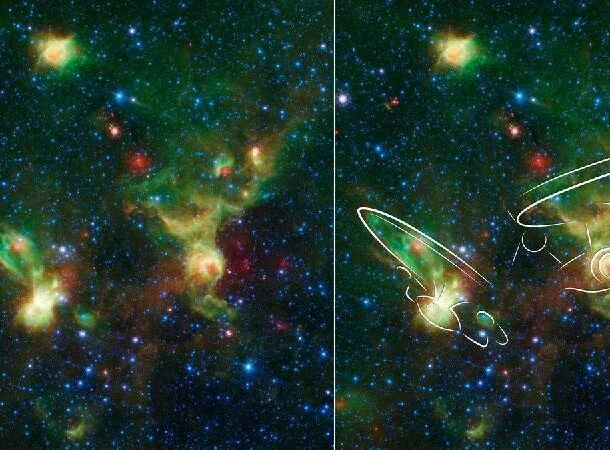
NASA recently shared a stunning image of two nebulae - or star birth regions - taken by the Spitzer Space Telescope. Scientists obviously have an eye for detail, as they have somehow managed to identify space material that clearly resembles the Starship Enterprise. To prove that these guys are real nerds, they released the photo on September 8, which, in fact, was the 50th anniversary of Star Trek.
13. Snail on Pluto 
Pluto's landscape is impressive. Unlike Earth, the surface of its icy plain - Sputnik Planum (diameter 1492 km) - is constantly moving. Imagine icebergs in the ocean and you will get an accurate picture.
In 2016, NASA published a funny photo of an exposed rock that looked like a huge snail. This object happened to be on the demarcation line between different areas of the plain's surface, so the line looks like a trail of mucus that this "snail" would leave behind.
12. Asteroid behemoth 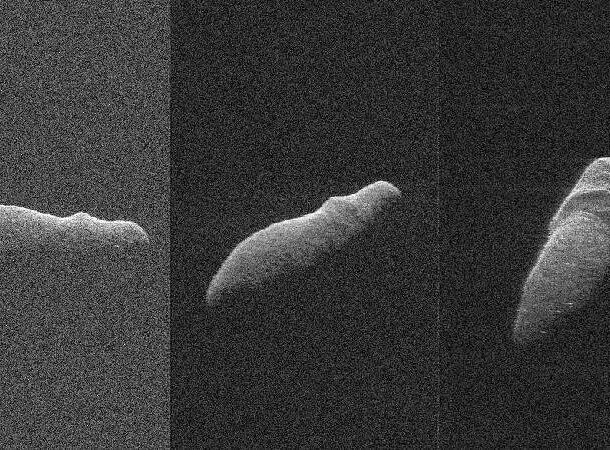
In December 2018, a strange asteroid flew past Earth on its way to deep space, and NASA couldn't help but notice that the rock resembled a hippopotamus. The space behemoth was about 1.6 kilometers long and flew past Earth at a distance of about 2.9 million kilometers. This event marked its closest approach in 400 years, and it is unlikely to approach us again until 2070. The danger of an asteroid colliding with our planet has never existed (and will not exist in the future). However, the short distance allowed NASA to capture some exceptionally detailed photographs of the celestial behemoth.
11. Ultima Thule - space snowman 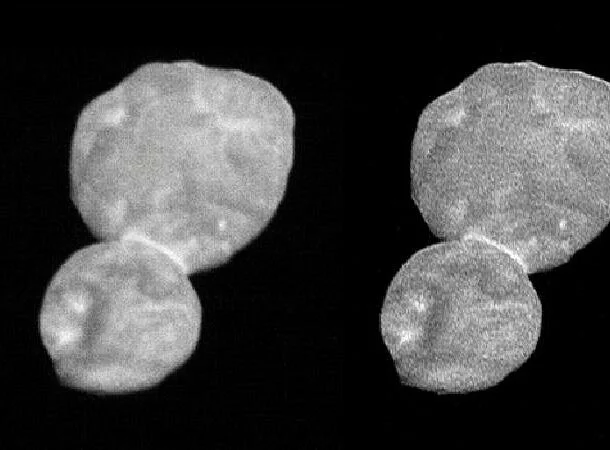
After the birth of a star, a disk of dust and gas remains. These tiny particles begin to clump together and become larger and larger. If a cosmic body flies past, gravity attracts other particles and objects to it, resulting in a cosmic snowball effect. These newly formed objects, or protoplanets, are known as planetesimals.
Scientists have been predicting their existence for decades, but we've never actually seen one. That all changed in 2019, when NASA's New Horizons probe sent back images of the "universal Snowman" - Ultima Thule. Its bizarre shape is due to moving particles of ice and dust that collided thousands of years ago. The result was two large blocks of rock that eventually collided and stuck together.
10. Space Moth 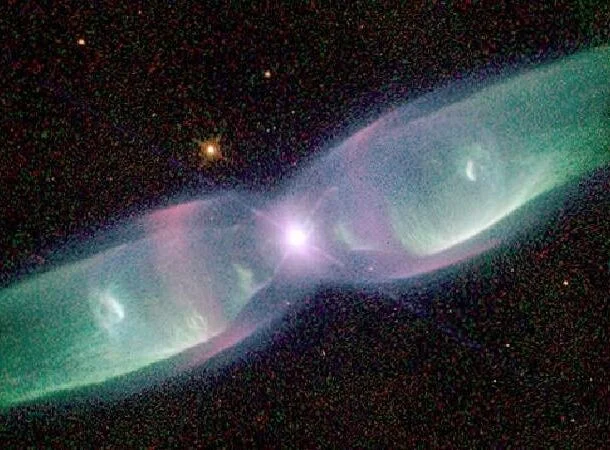
This image was taken by the Hubble Space Telescope. This is the bipolar planetary nebula PN M2-9. Its binary star system contains two stars instead of one.
The radiant “wings” in the photograph are the last light of a dying star after its outer layers are ejected. Astronomers have discovered that two stars in the M2-9 nebula have about the same mass as the Sun. While the larger star is approaching the end of its life, its smaller partner is a highly evolved white dwarf.
9. Bermuda Triangle for space 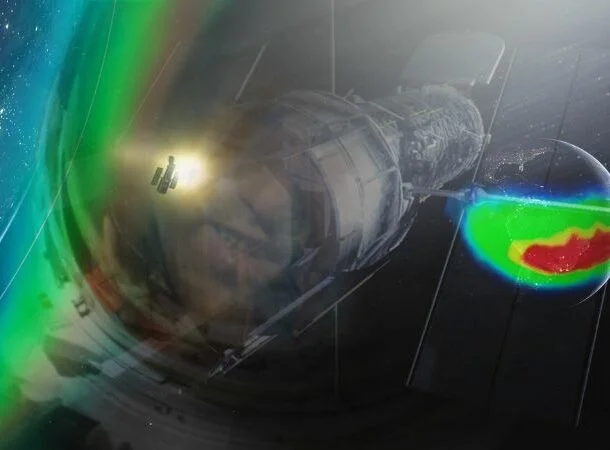
The earth is a huge magnet. Its magnetic field protects the planet's atmosphere and human technology from particles emitted by the Sun. However, there is a flaw in our protective bubble. There is only one place on Earth where harmful solar particles can enter our atmosphere and damage expensive equipment. This place is called the South Atlantic Anomaly (SAA).
The SAA extends across South America and the South Atlantic Ocean. Any space station or equipment passing through this region risks data loss or equipment damage. So NASA often turns off satellites passing by the SAA until they return under the metaphorical magnetic umbrella. While nothing is going away from this area, it poses a significant risk to astronauts and space equipment.
8. Planet 9 (and 10) 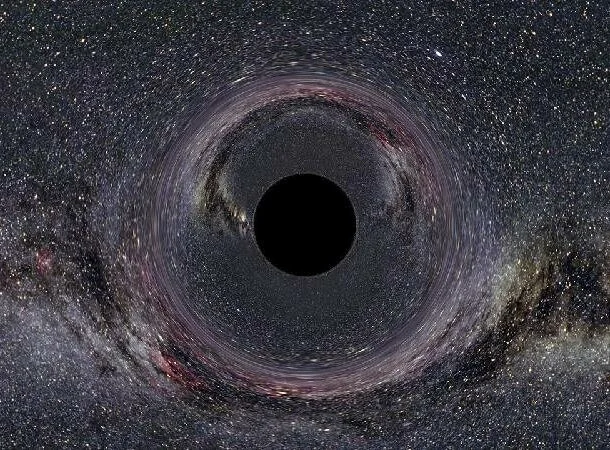
In 2017, a team of researchers from the California Institute of Technology published data indicating that there may be a ninth planet in our solar system. Planet Nine, which is ten times larger than Earth, is believed to orbit the farthest reaches of the solar system, far beyond the frozen wastes of the Kuiper Belt. By 2019, scientists also announced that they may have discovered a tenth planet. And this colossus can circle around the Kuiper belt itself. The unusual movements of objects in the Kuiper Belt actually support their theory.
Even if we take the Planet Nine theory into account, some belt objects have orbits that are about 8% different from expected. The most likely answer is a massive object with the mass of Mars, or, in other words, a completely new planet.
7. The Mysterious Moon of Saturn - Peggy 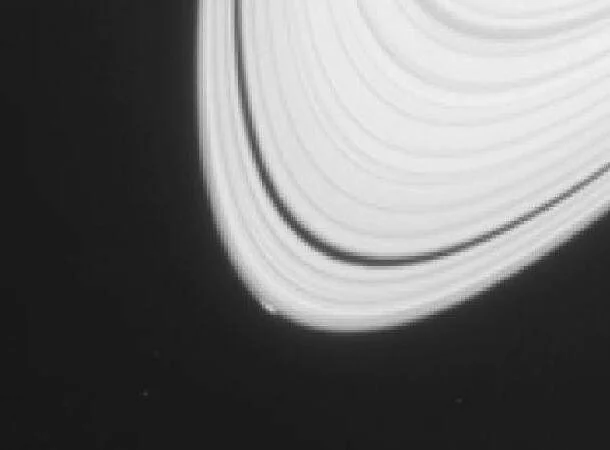
Have you ever watched the birth of a new moon? The Cassini spacecraft took many stunning and historic images of Saturn during its mission - including the discovery of a new moon forming just beyond Saturn's rings. The new moon, dubbed "Peggy", is just 0.8 km in size and appears to be forming on Saturn's outermost ring. Scientists believe these moons form when icy particles in the rings are pushed to the outer edges. Imagine a drop of water being thrown towards the edge of a rotating disk.
6The Comet That Spews Alcohol 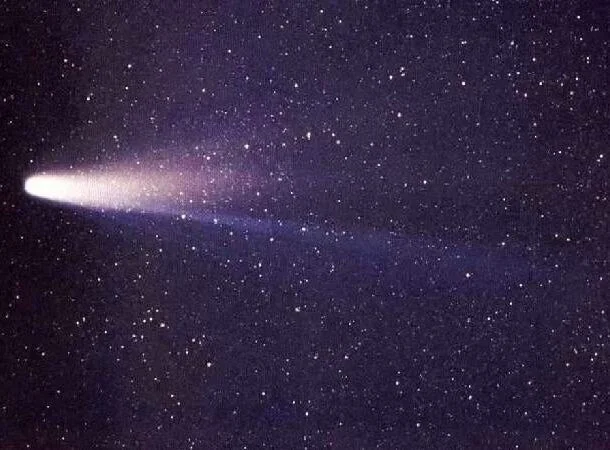
When astronomers first spotted Comet Lovejoy (C/2011 W3), everything seemed normal. Just a snowball with a tail. A year later, in 2015, Comet Lovejoy passed by the Sun and the heat caused an unprecedented phenomenon. The comet began spewing ethyl alcohol. At the peak of her intoxication, she threw away approximately 500 bottles of wine every second.
The tipsy comet lends credence to the theory that all life on Earth was founded by comets. Why? Comet Lovejoy spewed not only alcohol, but also huge amounts of sugar and organic molecules that (when combined) form the building blocks of DNA.
5. Life near Jupiter? 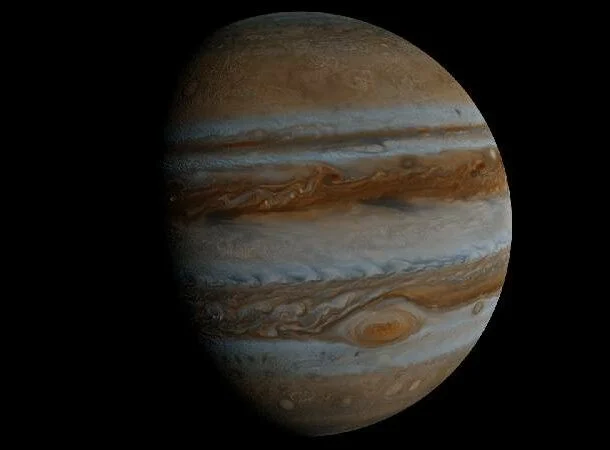
Among stars, Europa (one of the largest of Jupiter's 90 moons) is one of the most promising candidates for the search for intelligent life. Scientists have already confirmed the presence of vast oceans beneath its icy surface, and believe that there may be warm geothermal springs at its bottom. These springs can support thousands of life forms, just like the bottom of our oceans on Earth.
It is believed that in the oceans of Europe, as on Earth, oxygen is produced ten times more than hydrogen. This combination of chemical reactions delights scientists and astronomers.
4. Moon mystery 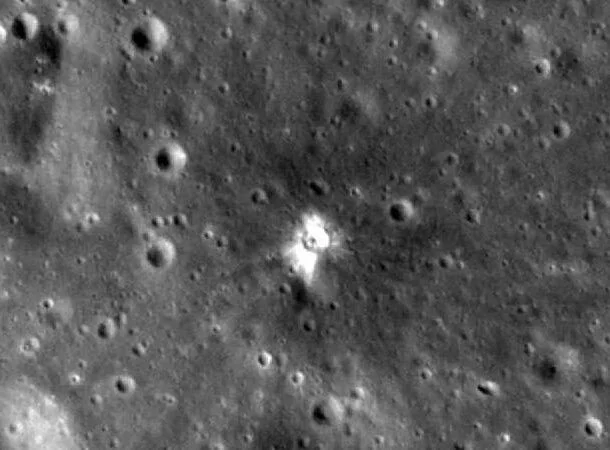
On March 4, 2022, the rocket crashed into the Moon, creating a huge crater 27.4 meters wide. Losing rockets on the Moon is hardly something new. Several NASA rockets have already suffered the same fate. However, the double crater left by this mysterious rocket is a unique sight for scientists, since no rocket has ever left behind such shapes.
NASA doesn't know who launched it or why. China categorically denies any involvement.
3. CO2 outside our solar system 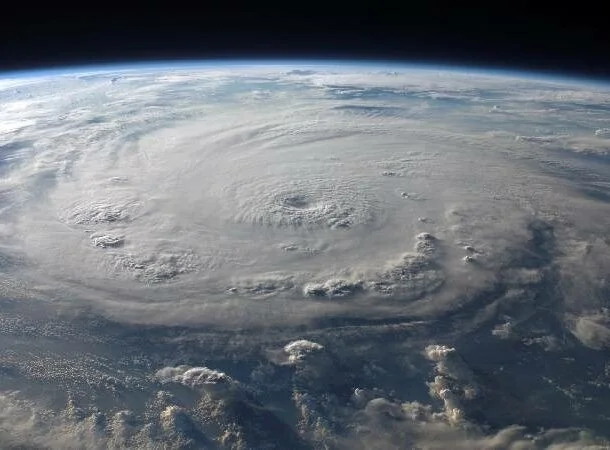
A year ago, astronomers discovered CO2 - or carbon dioxide - in the atmosphere of a Saturn-sized planet 700 light-years from Earth. This was the first time CO2 was detected outside our solar system. The James Webb Space Telescope discovered the planet and also spotted traces of methane, water vapor and carbon dioxide around several other planets - all potential signs of life on exoplanets.
2. Water on the Moon 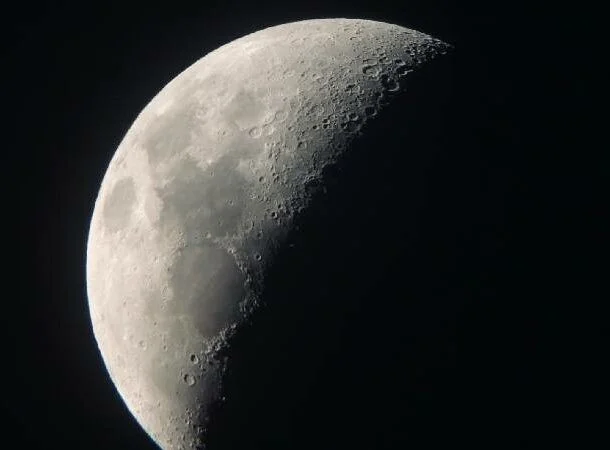
2009 was a landmark year for NASA: it was then that the Lunar Crater Observing and Sensing Satellite, or LCROSS, automatic station discovered water at the south pole of the Moon in October.
The probe was designed by NASA to study and observe the lunar surface, and a tiny satellite accompanied it to analyze the chemical composition of lunar materials. After a year of data analysis, it was confirmed that there is frozen water on the Moon. It was also discovered that a thin layer of water covers several areas of the ground surface.
1. Centaur asteroid and its rings 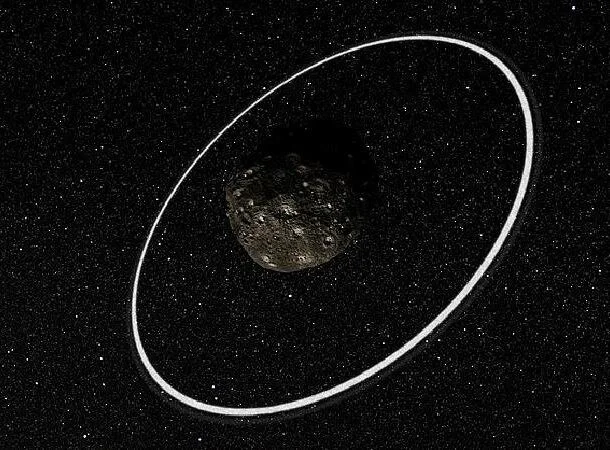
The asteroids, jealous of Saturn, now adorn themselves with sparkling rings! Astronomers have discovered the first asteroid with its own ring system. This is asteroid 10199 Chariklo - one of the largest centaurs, the largest asteroid between the Main Belt and the Kuiper Belt.
Until now, rings have only been discovered around giant planets. Typically, the particles in the rings are distributed, making their edges smoother. However, the asteroid’s rings are sharp, which means its rings must be constantly being formed by something, most likely invisible “shepherd” satellites that fly near the rings and hold the particles captive. Thus, despite their completely different origins, the rings of Chariklo at least obey some general rules.
